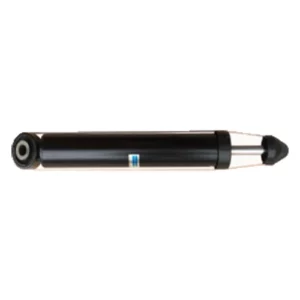Engineers employ various methods to rigorously test and validate the durability and performance of auto parts in real-world conditions. Some of the key testing methodologies include:
- Field Testing: Auto parts are often subjected to extensive field testing in real-world driving conditions. Test vehicles equipped with prototype components are driven on roads to simulate everyday usage, exposing the parts to varying temperatures, road surfaces, and driving behaviors.
- Durability Testing: Engineers conduct durability tests that subject the auto parts to repeated stress, strain, and cyclic loading. This involves simulating thousands or even millions of cycles of use to assess the part’s fatigue life and structural integrity.
- Environmental Chambers: Environmental testing involves subjecting auto parts to extreme conditions, such as temperature variations, humidity, salt spray, and UV exposure. Environmental chambers replicate these conditions to evaluate the parts’ resistance to corrosion, degradation, and performance under harsh environments.
- Vibration and Shock Testing: Auto parts are tested for their ability to withstand vibrations and shocks experienced during normal driving, as well as in off-road or high-performance applications. china auto part Vibration testing machines simulate road vibrations, while shock tests replicate sudden impacts.
- Material Testing: Material properties of auto parts are analyzed using various tests such as tensile strength tests, hardness tests, impact tests, and material composition analysis. This ensures that the materials used meet the required specifications for strength, durability, and performance.
- Computer Simulations and Modeling: Engineers use advanced computer-aided simulations and modeling techniques, such as Finite Element Analysis (FEA) and Computational Fluid Dynamics (CFD), to predict the behavior of auto parts under different conditions. These simulations help optimize designs before physical prototypes are built.
- Component Integration Testing: Auto parts are tested for their compatibility and integration within the larger system or vehicle. This includes compatibility with other components, proper fitment, and functionality within the overall assembly.
- Regulatory and Compliance Testing: Auto parts must meet regulatory standards and safety requirements. Engineers conduct tests to ensure compliance with industry standards set by organizations like SAE (Society of Automotive Engineers) or specific government regulations.
By employing a combination of these testing methods, engineers ensure that auto parts meet performance, durability, safety, and quality standards before they are integrated into production vehicles, contributing to reliable and high-quality automotive components.
What is the primary function of a auto part in a vehicle’s suspension system?
The primary function of an auto part within a vehicle’s suspension system is to manage the vehicle’s ride, handling, and stability. Various components within the suspension system work together to achieve this, and each part has specific roles contributing to overall suspension performance. Here are some key functions of auto parts in a vehicle’s suspension:
- Absorbing Shocks and Vibrations: Suspension components, such as shock absorbers or struts, dampen shocks and vibrations from road irregularities, ensuring a smoother ride and minimizing the impact felt by vehicle occupants.
- Maintaining Tire Contact: Parts like control arms, springs, and bushings help maintain proper tire contact with the road surface, ensuring optimal traction, handling, and braking performance.
- Managing Vehicle Stability: Stabilizer links, sway bars, and related components help control body roll and sway during cornering, improving stability and preventing excessive lean or roll of the vehicle.
- Supporting Weight: Suspension components bear the weight of the vehicle and its occupants. Springs, in particular, provide support and ensure proper load distribution among the wheels.
- Steering Control: Tie rods, ball joints, and other steering components within the suspension system transmit steering input from the driver to the wheels, allowing for precise steering control and proper wheel alignment.
- Enhancing Handling and Control: Properly functioning suspension components contribute to predictable handling, responsive steering, and overall vehicle control, enhancing driver confidence and safety.
- Adapting to Road Conditions: The suspension system allows the vehicle to adapt to various road conditions, including smooth roads, rough terrains, or uneven surfaces, by absorbing impacts and maintaining stability.
In summary, auto parts within the suspension system work collectively to ensure a comfortable ride, stable handling, and safety by managing the vehicle’s interaction with the road surface and supporting the vehicle’s weight while allowing for controlled movement and responsiveness.
